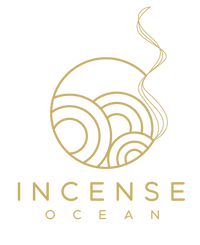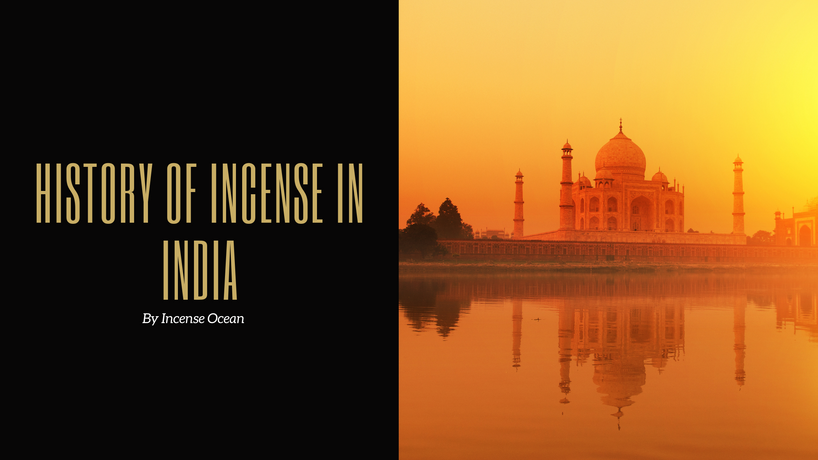- No products in the cart.
History of Incense In India
04
Dec
The incense sticks that are used in India are known as Agarbatti. They have this name because it is wound up from the Sanskrit word Aroma. Incense in India is a huge part of their economy and an essential part of the region's religion.

What are the Basic Ingredients an Incense Stick Has?
Some of the basic ingredients which an incense stick has from history include paste, bamboo sticks which are typically made out of things like sawdust, charcoal dust, tabu powder, gum, jiggit, joss, and other adhesives which are made from the back of the glutinosa litsea and various other trees. Other perfume ingredients are usually made from masala or powdered grounded ingredients.
Also, more commonly, it is known as a merge of things like essential oils or perfumes. After the paste used from the base gets applied to the bamboo stick, utilizing the historic method still moist or rolled into the masala. It is also more commonly left there for many days, which it dries, and then it gets dipped into a solvent that scents nice.
There are a lot of resins, including frankincense, myrrh, and halmaddi, which are tree resins that are also used in the traditional incense for masala. It is also typically used as a fragrant ingredient used for binding. All of these would end up adding nice fragrances after the incense is ready.
The Ancient Source of Indian Incense
One of the most ancient sources of incense is also known as the Vedas. It is specifically known as the Rigveda and the Atharva-Veda. It was made in ancient history to create a special incense manufacturing process. However, there is a lot of Vedic literature that has mentioned the usage of incense to get rid of or hide smells and create a pleasant smell. There are also modern systems that organize making incense, and some of these were created by the priests of medicine at the time.
Because of this, there were organized and modern methods of making incense linked to the medical system used by the Ayurvedic Indian tribe. This incense method was also made using a stick made out of bamboo, and it originated in India when the 19th century ended. It also greatly got rid of the shaped, extruded, and rolled method, which Indians still used in that period for cones and dhoop for different incense shapes for exportation in places like Japan, Tibet, and Nepal.
There are a lot of other main incense forms, including benzoin resin, logs, cones, and sambrani. These are all different pastes that could change forms and look like either logs or pyramids, and then, in the end, they would be dried.

Other Ingredients used to make incense in the Past
There are a variety of flavors that are used to make incense. Some of these flavors include paste and bamboo sticks.
There are a lot of Indian makers who make incense that ensure they do not follow other principles apart from those from Ayurvedic. In this case, they make use of ingredients that have five classes categories. These categories include star anise, branches, water, aloeswood, sandalwood, cedarwood, frankincense, cassia, myrrh, earthen roots, borneol, turmeric, valerian, costus root, ginger, Indian spikenard, leaves, fire flowers, and patchouli.
Another binding fragrance ingredient is Halmaddi. It is used in the creation of traditional masala incense. It is also an earthen-colored resin available in liquid form, drawn from the Triphysa Ailanthus tree, just like other resins. It can also be found in semi-liquid forms when it is fresh. It gets stronger when it is in a brittle solid form, and then it ages and evaporates.
There are a lot of Incense makers that end up mixing this with honey to make sure that it remains in a pliable state. As a result of extremely crude methods of extraction that has resulted in making trees die. In the 1990s, Indian Forest Department ended up stopping extracting resins, and this ended up increasing the price at which Halmaddi was sold. Because of this, the usage of Halmaddi in incense was reduced. In the year 2011, the rate of extraction was agreed upon under various leasing agreements. All of these increased in the year 2013.
However, the production rate was still greatly limited sufficiently for the resin to be stolen through improper extraction methods and for them to be sold through the black market. There are a lot of other tree gums or resins which are all used as either a binding agent. Things like myrrh, amber are parts of these binding agents, including frankincense.
All of these add-in very different but lovely smells after the incense is ready and finished. There are resins like gum arabic, which could be used wherever it is needed to serve as a binding agent. Without it, the fragrance might be nonexistent. This is why it needs to serve as an ingredient to Indian incense.

Conclusion on the History of Incense In India
Whenever anyone thinks about incense, places like India and Egypt always comes to mind. There are a various reasons it is know to be this way, these reasons includes the fact that the history of incense works together with spirituality and ritualism. It is used in India and different parts of Asia as of 3300 B. That was when incense spread out to the old part of China around 2000 BC.
That was where it was used for prayer and worship. India has become the main incense producer, and the world knows that burning incense has been an essential part of Hinduism for years and years to come. Up till presently, incense has been used in India for a lot of different purposes. These used includes medicinal purposes, relaxation purposes, and chasing away evil spirits in an area or space.
If you are looking for the best type of Indian incense, you have come to the right place. Incense Ocean have all types of incense, check our space out and enjoy.







